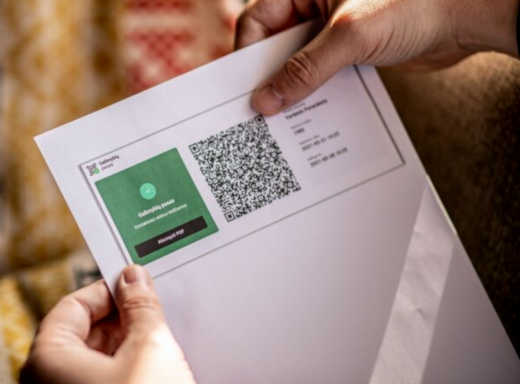Restrictions: What Do They Mean in Practice?
There are many more rules, with lots of convoluted and sometimes conflicting provisions. And it’s even more confusing because bureaucrats revise the rules almost daily. Here’s how it currently works in practice if you don’t have the Opportunity Pass:
- For shopping, you are only allowed to shop in small stores (<1500 m2) which have street entrances and whose main activity is to sell food, veterinary goods, pharmaceuticals, glasses and contact lenses, or farming supplies. You may not enter stores which mainly sell any other products. You may not enter any shopping mall. You may not enter large stores, including supermarkets.
- For eating and drinking, you cannot visit any restaurant, cafe, or bar. This includes all indoor areas and most outdoor areas (the details are complicated; see separate section below).
- For transportation, local city buses do not require the Opportunity Pass. But political leaders have indicated all forms of public transportation might require the Pass if they can figure out how to make it workable on busy buses and trains.
- For medical care, inpatient services require the Covid Pass. For outpatient medical care (e.g., doctors’ offices, specialist clinics, dental offices), medical facilities may allow a patient to enter who does not have the Opportunity Pass. But in practice, many clinics require the Opportunity Pass except for emergency situations.
In my area, outpatient medical facilities require the Covid Pass or certifications. Several days ago, my family was turned away from a medical facility because we did not have the Covid Pass. The medical facility offered us the option to come back if we returned with a negative PCR test. In a separate incident a few days later, we went to the dental office we’ve attended for years for an appointment for one of my children, but we were asked to leave when the staff discovered that I don’t have the Opportunity Pass.
Work
Employers may mandate that employees have the Opportunity Pass. Each company and industry is setting its own standards regarding if and how to implement the mandate.
In the case of my wife and myself, we work in different industries and have different occupations. But both our employers have separately created the same policy. People without the Opportunity Pass won’t actually be fired, because that would create many legal issues, obligations, and unemployment benefits. Instead, employees are suspended without pay.
In our case, both my wife and I were suspended from our jobs without pay on September 13. We are allowed to return when we comply with the mandate to present a valid Covid Pass.
Using the Opportunity Pass
The Covid Pass is in the form of a QR code.

To use the Opportunity Pass, you show the QR code to a “verifier” (guard or staff at restaurants, stores, building, etc). The verifier scans your QR code. The scanner confirms that the Pass is authentic, verifies your safe health status, and displays your name and date of birth. You then show your ID to the verifier to confirm that the information in the Pass matches your ID and that the Pass therefore belongs to you.


Enforcement
The rules must be enforced by all private and public entities which are affected, e.g. restaurants, stores, buildings, medical facilities, etc. Government inspectors will check to ensure compliance. Citizens may also report any business which does not comply. Any business which does not properly enforce the Opportunity Pass is fined.
Those who don’t use smartphones may go to a government office or pharmacy to get a paper printout of the QR code. Government data shows that about one-third of people use a paper Covid Pass instead of a phone.

Here’s how it looks in practice (pictures from 13-Sep-21 at the entrances of Lithuania’s largest shopping mall and a large supermarket).
At the entrance to shopping malls and stores are guards who check the Opportunity Pass of every person who enters:


People queue in line to enter:

Large shopping centres have a machine scanner. When people reach the machine, they scan their Opportunity Pass. If the machine flashes a green light and beeps to signal that the Pass is valid, the guard allows that person to enter:



The machines are currently only installed in larger shopping centres. In other businesses, the guard uses a phone app to verify the QR code on the Opportunity Pass:


Both the machine and the phone app can also scan the paper printout for people who do not have a smartphone:


The guards in larger businesses have been specially trained. Said the head of the Lithuanian Retailers Association: “This is a new profession: Opportunity Pass Verifier. This is not a security guard. The Opportunity Passport Verifier staff must have been trained and have a type of license.“

People who do not have a valid Opportunity Pass may not enter. At larger shopping malls, police are present to handle complaints from non-Pass holders:

At stores without police, workers handle the complaints. A representative for a major supermarket chain commented: “There have been conflicts because some people aren’t happy with the new rules… Workers checking the Passes find it psychologically difficult to deal with all that negativity.“
To be continued…
